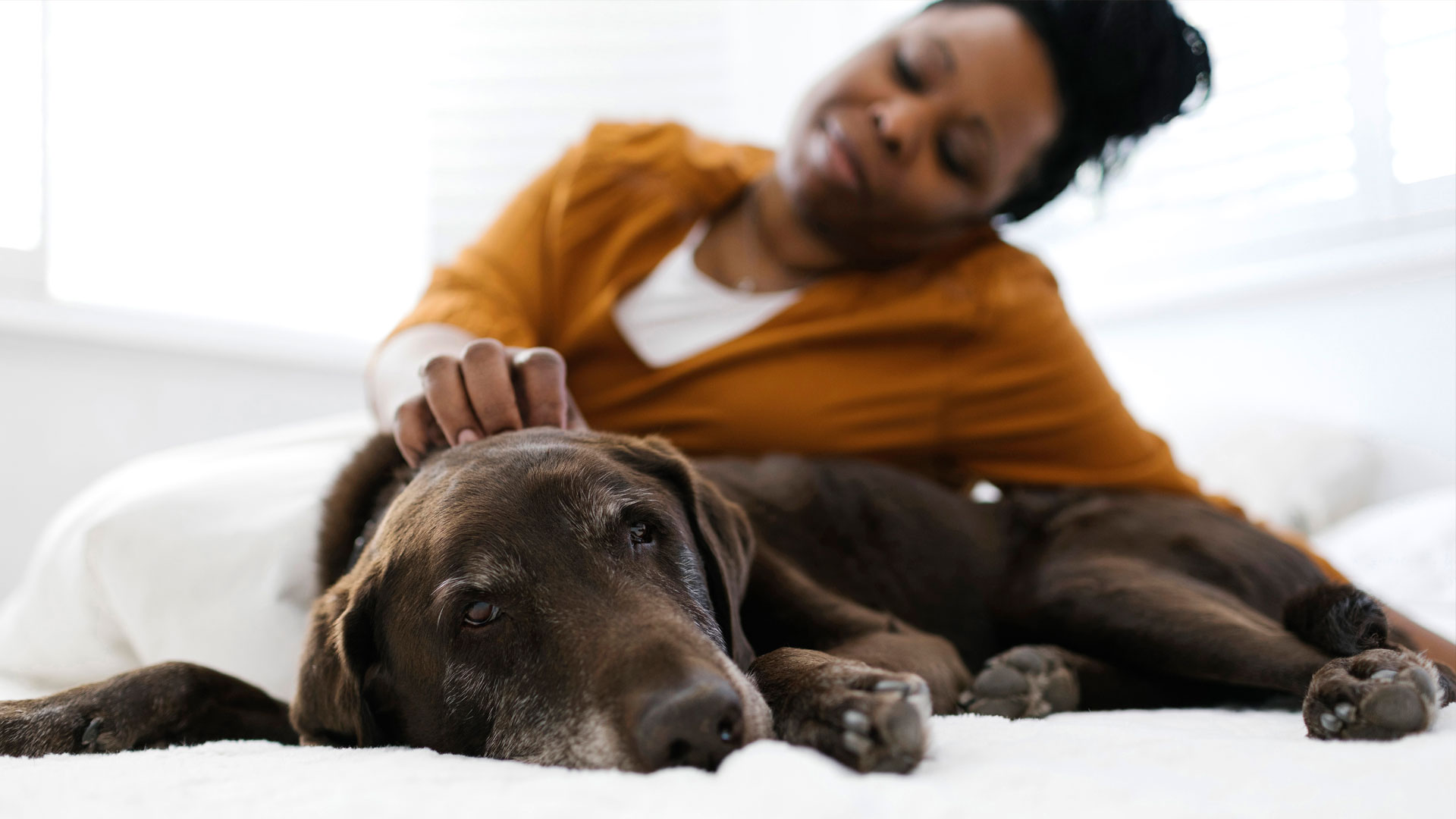
What do you do if your dog is scared? Whether your pup has one of the 32 everyday fears and phobias in dogs or they get spooked by seemingly random things sometimes, there might have been a moment when you’ve been wondering just how to handle their fear.
Indeed, many people believe that you shouldn’t comfort a scared dog at all – that you’ll simply be reinforcing their fear, and that they’re correct to have it. However, this is a myth. It’s fine to comfort your pup if they’re scared or frightened; in fact, it’s what you should be doing, whether it’s with plenty of cuddles or with one of the best dog toys.
Expert trainer Carolyn Martell, who’s also the founder of Good Dog Training, has explained what to do when your dog’s scared in a recent Instagram post, and we think it’s worth taking note of!
“Yes, you can comfort your scared dog,” Martell begins. “Being empathetic to your scared dog will not reward fear. Supporting your scared dog won’t teach them to be afraid.”
She compares you supporting your dog if they’re scared to a friend supporting you if you’re scared – dogs need that reassurance and comfort just like humans.
Martell explains that, when comforting your scared pup, you aren’t rewarding their fear. This is because, simply, you can’t reward or punish emotions anyway. You can only reward or punish behavior, so managing fear or anxiety in dogs by comforting them works! She continues, “Providing comfort lets your dog know they can come to you for help – it doesn’t teach them that being scared is fun.”
She uses the example of a thunderstorm. If there’s a storm and your dog’s scared, but you ignore them, you’re not teaching your dog that the storm isn’t scary. You’re teaching your dog that you won’t help them. In the future, this may mean that they’ll be less likely to reach out to you when they’re unsure or afraid.
So, what can you do to comfort and reassure your pup if they’re scared? It can depend on the dog, but Martell suggests trying things like giving them a stroke, picking them up, and letting them lie next to you, or giving them their favorite treats, toy, or blanket. But ultimately, as she says, “You know your dog best. Support them. Help them.”
Maybe you’re asking the question, ‘How do I know if I have a scared dog?’ There are some body language and behavior cues to watch out for, from aggression and increasing digging and chewing to shivering, trembling, and panting.







